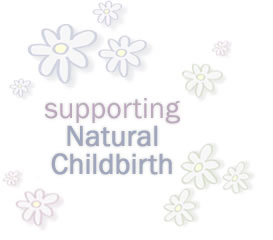


The Ten Steps of Mother-Friendly Care
To receive CIMS designation as "mother-friendly," a hospital, birth center, or home birth service must carry out our philosophical principles by fulfilling the Ten Steps of Mother-Friendly Care:
A mother-friendly hospital, birth center, or home birth service:
- Offers all birthing mothers:
- Unrestricted access to the birth companions of her choice, including fathers, partners, children, family members, and friends;
- Unrestricted access to continuous emotional and physical support from a skilled woman—for example, a doula,* or labor-support professional;
- Access to professional midwifery care.
- Provides accurate descriptive and statistical information to the public about its practices and procedures for birth care, including measures of interventions and outcomes.
- Provides culturally competent care—that is, care that is sensitive and responsive to the specific beliefs, values, and customs of the mother’s ethnicity and religion.
- Provides the birthing woman with the freedom to walk, move about, and assume the positions of her choice during labor and birth (unless restriction is specifically required to correct a complication), and discourages the use of the lithotomy (flat on back with legs elevated) position.
- Has clearly defined policies and procedures for:
- collaborating and consulting throughout the perinatal period with other maternity services, including communicating with the original caregiver when transfer from one birth site to another is necessary;
- linking the mother and baby to appropriate community resources, including prenatal and post-discharge follow-up and breastfeeding support.
- Does not routinely employ practices and procedures that are unsupported by scientific evidence, including but not limited to the following:
- shaving;
- enemas;
- IVs (intravenous drip);
- withholding nourishment or water;
- early rupture of membranes*;
- electronic fetal monitoring;
- Has an induction* rate of 10% or less;†
- Has an episiotomy* rate of 20% or less, with a goal of 5% or less;
- Has a total cesarean rate of 10% or less in community hospitals, and 15% or less in tertiary care (high-risk) hospitals;
- Has a VBAC (vaginal birth after cesarean) rate of 60% or more with a goal of 75% or more.
- Educates staff in non-drug methods of pain relief, and does not promote the use of analgesic or anesthetic drugs not specifically required to correct a complication.
- Encourages all mothers and families, including those with sick or premature newborns or infants with congenital problems, to touch, hold, breastfeed, and care for their babies to the extent compatible with their conditions.
- Discourages non-religious circumcision of the newborn.
- Strives to achieve the WHO-UNICEF “Ten Steps of the Baby-Friendly Hospital Initiative” to promote successful breastfeeding:
- Have a written breastfeeding policy that is routinely communicated to all health care staff;
- Train all health care staff in skills necessary to implement this policy;
- Inform all pregnant women about the benefits and management of breastfeeding;
- Help mothers initiate breastfeeding within a half-hour of birth;
- Show mothers how to breastfeed and how to maintain lactation even if they should be separated from their infants;
- Give newborn infants no food or drink other than breast milk unless medically indicated;
- Practice rooming in: allow mothers and infants to remain together 24 hours a day;
- Encourage breastfeeding on demand;
- Give no artificial teat or pacifiers (also called dummies or soothers) to breastfeeding infants;
- Foster the establishment of breastfeeding support groups and refer mothers to them on discharge from hospitals or clinics
† This criterion is presently under review.
©1996 by The Coalition for Improving Maternity Services(CIMS).
http://www.motherfriendly.org/